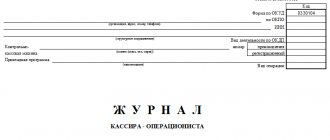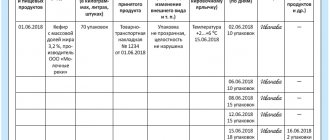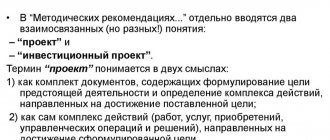How to create a magazine in Joomag
After registering on the Joomag website, you will be taken to the “My publications” section. This is the menu for managing your future magazines.
To add a new publication to it, click “Create publication”. After that, you can start from a blank page, choose a suitable template from the Joomag catalog, or upload your own PDF file as a source.
Having made your choice, click “Create publication” again and in the next menu click on the pencil and paper icon, and then “Edit”. The system will launch the visual editor. The service uses Flash technology, so enable it when Joomag asks you to.
The editor offers a lot of tools that will help you realize your full creative potential. For example, you can add and format text, insert various shapes, images and videos. The system allows you to fine-tune the arrangement of elements on virtual pages. All changes are displayed in real time.
To make it easier for users to understand the rich capabilities of the editor, the Joomag website has a detailed knowledge base in Russian.
How to open a scientific journal
We started an ambitious project - to open our own electronic scientific journal. At first it seemed that this was an overwhelming task and nothing good would come of it, especially since we had never been involved in publishing. However, as with any business, the main thing is to start. Although the future of our journal is still in question, I decided to describe our experience on this difficult path and, I hope, this story will encourage someone else to create their own good journals for the benefit of Russian science. We wanted something like this: to create an electronic peer-reviewed journal in English, completely official, which would be taken seriously by Western scientists, whose articles would be referenced in order to calculate the impact factor. The minimum program is to get into the list of journals of the Higher Attestation Commission, ideally - to get into PubMed (our journal on bioinformatics). No commercial benefit was intended.
Software
The first step, of course, is to install some kind of web application for the magazine. Theoretically, you can publish articles even in WordPress, but magazines still have their own specifics. We need support for issues, sections, reviewing articles and much more that became clear along the way. At first glance, there is quite a lot of free special software for keeping journals. Here, for example, is a list of as many as 13 points. Here is some overview of the software. We had a chance to try two options.
Ambra project
This system attracted us primarily for several reasons.
Firstly, it is called with the letter A, which is why it comes first in the above list (marketers, take note!). Secondly, it is officially used for all biological journals of the PLOS family, which means that the specifics of the subject area can be better taken into account in this system. Finally, Ambra is written in Java, under Tomcat, and we are familiar with these technologies. Unfortunately, this is where the benefits end. It seems that PLOS writes it mainly for itself and, although it publishes the source code, deploying and configuring everything for strangers is a difficult task. There is no installer included, the only useful documentation is Quick-start in the wiki (which is not that quick), and what to do next is unclear. There is always a feeling that a bunch of necessary files are simply missing, or that something needs to be downloaded from the repository and put somewhere, but it is not clear what and where. There is a half-dead mailing list that is not particularly helpful. After suffering with Ambra for several days, I abandoned it and began to look further.
Open Journal Systems (OJS)
This is a PHP application that left a much better impression, and in the end we settled on it. OJS boasts a much more impressive list of journals using it. Installed easily (the main thing is not to mistakenly download the development version, which for some reason is higher than the stable one on the Download page). The system allows you to host several magazines at once; supports access rights, subscriptions and roles; integrates with PayPal to receive money from subscribers; allows you to publish an article in several formats (HTML, PDF) and, most importantly, has tools for organizing reference lists (unfortunately, this component has several unpleasant bugs). New useful features were regularly discovered. The code is clear and structured, so if you don’t like something, you can easily correct it. There is a very live forum, bug tracker and wiki. Among the disadvantages, in addition to the glitchy bibliographic tools, one can note the incomplete and slightly outdated official documentation.
Layout and formats of articles
The format for storing and presenting articles should be decided immediately.
OJS does not impose any specific format; it only offers to download, for example, ready-made HTML and PDF versions of articles. It is assumed that the layout designer will prepare them himself in third-party applications. Many people will think of LaTeX as an internal format that can be easily converted to both HTML and PDF. However, the layout designer himself will have to translate it into LaTeX: if for a mathematical journal it is still possible to force all authors to send articles in LaTeX, then in biology this is an empty issue. Moreover, both reviewers and editors will then have to work in this format. One way or another, we have to come to terms with the fact that articles will be submitted in Microsoft Word formats. However, as it turned out, LaTeX is still not the best option. In order to get into PubMed, you must first get into PubMedCentral, and this requires that all articles be in the NLM Journal Publishing Tag Set XML or another widely used schema. It is quite reasonable to bring articles to this form. Two problems arise: how to automate the creation of this XML and how to automate the generation of HTML and PDF from it.
Generating a list of references in NLM formats is already supported in OJS, which makes me very happy! To generate a blank with a title, abstract, all the necessary output data and a list of references, I wrote a special template in OJS. It is not possible to completely automatically convert a docx file to NLM. Even if you create a special template for MS Word, the authors will still not prepare articles strictly according to it. No, no, but they will enter the title not with a style, but simply by increasing the size. Arguing with authors takes longer than fixing it manually, and even for a start-up magazine, arguing with authors is generally unprofitable. Therefore, you still need to create a template for MS Word with the requirements, automate as much as possible, and finish the rest manually.
We unpack document.xml from a docx file (do you still know that this is a zip archive?) and perform a self-written XSL transformation that converts its contents as much as possible into what is needed. For conversion we use Saxon. After that, we add some little details with a Perl script, then insert the result into the blank and edit it by hand.
To generate HTML from NLM, there is a ready-made XSL transformation on the NLM website. Of course, it had to be modified a little to suit our ideas about style, but overall there were no problems. It turned out to be more difficult with PDF generation. At the same link there is a conversion to the XSL-FO format, but the free FO processor Apache FOP refuses to chew the result, swearing at the use of unsupported features. There is no desire yet to get involved with paid FO processors like Antenna House Formatter. The idea arose to generate PDF from HTML. Of the separate software that solves this problem, we tried wkhtmltopdf, which uses the WebKit engine to render HTML. Unfortunately, it turned out that it does not support formulas in MathML. As a result, at the moment everything has come down to using the Firefox + PDF Creator combination. The commands window.print() and window.close() are added to the generated HTML; In a separate installation of Firefox, quick printing is allowed without a dialog with options and web pages are allowed to close their window. For better PDF pagination, the CSS property page-break-inside:avoid is used in some places. Unfortunately, the generated PDF is far from ideal. What is especially missing is a two-column layout with pictures and tables taken out of the general flow and glued to the top and bottom edges of the page. In general, there is room for improvement here. In other magazines, PDFs are manually typed by special people, but we don’t have the resources yet.
Special mention should be made about the formulas. NLM XML uses MathML to represent formulas. In the files sent by the authors, formulas can be seen in the form of Microsoft Equation, MathType objects, in the form of native formulas that appeared in Microsoft Word 2007, or even in the form of pictures. Well, we simply forbade sending pictures, and everything else can be converted to MathML using the same MathType. When generating the HTML version of the article, we leave the formulas as they are, we just remove the namespace mml. MathML is poorly supported by browsers, but using MathJax helps. When generating PDF, Firefox's native MathML renderer is used.
Registration
In order for people to know about the created magazine, for articles from it to be found in special search engines and to be able to reference it normally, you need to register in a bunch of places. Here, too, there are all sorts of difficulties.
ISSN
Getting an International Standard Serial Number is probably the first and easiest thing to do. Journals without an ISSN may not be considered elsewhere. Obtaining an ISSN is free and for electronic journals everything can be done online. Fill out the form, send it, wait 10 working days, you will be given a number. You can and should obtain an ISSN before the publication of the first issue of the journal (but not earlier than six months in advance). You will be issued a number that will not be officially registered in the ISSN registry. After the first issue of the magazine, you provide a link to it, and your issue is made official.
DOI
DOI - digital object identifier;
a stable identifier that is assigned to journals, issues, articles and other materials published online. For example, it looks like this: 10.1126/science.338.6114.1558. The DOI does not change even if the journal moves to another publisher, so when you link to an article using the DOI, you can be sure that the link will remain alive. Without a DOI, a scientific journal is nowhere, but you have to pay decently for them. There are several DOI registrars, but the competition is not as strong as, for example, with domain name registrars. Actually, other than CrossRef, it is difficult to take other registrars seriously. CrossRef charges the publisher a minimum of $275 per year, plus a dollar for each new DOI allocated to an article or journal issue. To register there, you need to watch an hour-long webinar and send the contract to the States by courier. If everything works out, you will be sent the first invoice and after payment you will be given a DOI prefix. The main requirements are to publish unique material (without copy-paste) and indicate DOI links in the reference lists of published articles. OJS supports DOIs quite well: you can set a custom format for generating new identifiers, OJS automatically assigns them to new articles and generates XML for registering new DOIs in CrossRef.
WorldCat
WorldCat is a unified catalog of tens of thousands of libraries around the world. They support the OAIster service, which can index your articles. Registering there is free and can be done before the first issue of the magazine. WorldCat will independently download and index metainformation about articles in the Open Archives Initiative format (OJS supports this format).
eLibrary.ru
To participate in the Russian Science Citation Index (RSCI, this is useful for getting into the Higher Attestation Commission list), you will need to enter into an agreement with eLibrary.ru. It's free, but it introduces an additional complication: they need to provide metadata (names of authors, their affiliations, titles and abstracts of articles) in Russian and English, even if the article is published only in English (or only in Russian).
Impact factor
Despite all the shortcomings, the impact factor remains the main criterion for the quality of a scientific journal. To get into the impact factor calculation system, you need to register the journal in Web of Science. The scientific component is already being assessed here. To be considered for a journal, you must submit three consecutive issues, and you must submit an application after the first one is published, and then again after the second and third. If everything goes well, in two years you will be assigned an impact factor.
PubMedCentral
PubMedCentral (PMC) is a free, full-text archive of articles on biology and related topics.
Almost all Western biological journals publish their articles in PMC. It is also the most direct route to PubMed. In general, any journal should consider collaborating with some scientific archive (in addition to PMC, there are, for example, CLOCKSS or Portico). This ensures that articles will not be lost to the scientific world, even if your publishing house ceases to exist. After submitting an application, the PMC first evaluates the scientific component of the journal and, if successful, evaluates the technical side. There are quite strict requirements here. As I said above, articles must be in XML of a certain schema, and PMC imposes additional requirements. There are special rules for pictures in articles. If everything went well, then a seven-page agreement is concluded, which must be sent to PMC.
All the rest
If you have overcome all the technical difficulties, then the only thing left is to find authors, reviewers, editors and layout designers who want to work with your journal. How and where to look for them - these questions are beyond the scope of my article.
How to publish a magazine
Having completed work on your masterpiece, click “Save”, and then “Run”. Next, follow the system prompts to configure publishing settings. During the process, you will have to specify who will be able to view the magazine via a direct link, as well as select a category and description for distribution through Joomag channels: web kiosk and mobile applications of the service.
You can read in detail about the promotion settings, frequency and sale of magazines in the special help sections on the Joomag website.
Area
Monthlies receive from 20 to 30% of their profits from the correct selection and expansion of the magazine’s distribution area. Many publishers know that the way to the shelf is through an entry fee to the wholesaler.
According to gossip, to enter the Moscow market, you need to pay $40-50 thousand, excluding the advertising campaign. In the regions, the process of entering the market is much cheaper, but there are no fewer problems. You may not get any money from the provinces at all, and returning circulation can be difficult.
A common problem for almost everyone is the banal lack of space on the shelves of kiosks and trays. The abundance of magazines simply does not allow placing a new publication in a way that will attract attention. As a result, only obvious favorites are actively sold, like Cosmo or Caravan of Stories, which customers ask about without trying to find them on the shelf.
Beginners who do not want to spend money on advertising lose at the start. Owners of well-promoted brands understand better than others that promoting a newspaper or magazine is indispensable without an advertising campaign.
If the publisher believes that the reader will not be able to remain indifferent to the artistic merits of the magazine, and this is quite enough to fall in love with the public, he is deeply mistaken. First of all, you need to interest a potential reader, and only then maintain his attachment to the magazine with meaningful materials and successful design.
What you can get for free
The free plan is for one user and includes 500 MB of magazine storage with limited promotion and monetization options. For example, you cannot use the service’s SEO capabilities, and up to 100 people can subscribe to the magazine’s email newsletter. In addition, you will not be allowed to make money from readers.
Paid plans start at $9 per month. They are suitable for both individuals and for teamwork of several users on shared journals. The higher the monthly payment, the more a person can join the team. And the more tools they will receive to promote and sell content.
Joomag →
The process of creating a magazine concept
The concept of the publication makes it possible to form an original idea of the printed product.
It allows you to maintain a uniform style of presenting materials, takes into account the customer’s tasks and ensures their implementation. Thanks to the right combination of appearance and internal content of the magazine, it is possible to achieve its popularity and attract the constant interest of readers for many years.
With the help of competent development of the concept of a printed publication, you can convey its content to a potential addressee. At the same time, the commercial success of the magazine is an important issue. To do this, you should initially stimulate the sales of this printed product, which involves encouraging the consumer audience to purchase the product. Thus, a correctly created concept creates the conditions for the emergence of commercial demand for the publication. This gives him the opportunity to develop and improve.
The creation of a magazine concept begins with the choice of its genre direction. To do this, you should outline the purpose of the project itself and determine the target audience. After this, publishing parameters are discussed, in particular, the volume, the expected circulation and the type of paper that will be used to create the cover and block.
The next stage of creating a magazine involves taking steps to fill it internally. In this matter, an important role is played by the development of a rubricator, which is understood as a list and order of sections that are united by one topic and meet the specifics of the entire printed publication.
At the final stage, the design of the magazine is developed, with an important point being the ratio of text and illustrations, which depends on the chosen style of the printed publication, the orientation towards a specific reader and the direction of its development. When creating a magazine concept, an important issue is filling it with information by writing texts by company specialists and specially invited authors for the “pilot issue”.
In addition, it should be taken into account that the name of the magazine acts as its logo.
This requires you to come up with a creative name that will be placed at the top of the cover, since the reader pays attention to it first. It should be taken into account that the development of a logo, the price of which depends on the urgency, number of options and prepayment conditions, allows you to increase the recognition of printed products. At the same time, the title should be perfectly readable. Subscribe to our channel in Yandex.Zen
Only quality content is needed
As a rule, electronic magazines are of interest to users of the World Wide Web as a means of entertainment and a source of necessary information. Quality information is now highly valued by those who spend time on the Internet. Sometimes, in order to get the necessary data, you have to spend a lot of time searching and then saving the addresses of several suitable sites.
If an electronic magazine provides readers with up-to-date and systematic information on a topic that interests them, then such a publication will not have problems with subscribers. And this needs to be taken into account when answering the question of how to create your own magazine.
What does it take to have a magazine?
Scientific journals include electronic or paper journals, articles in which are reviewed before publication. In accordance with the order of the Ministry of Science and Education of Russia, special requirements are imposed on scientific publications:
- content – articles, research results, reviews and other works of scientists are published;
- careful selection of reviewers - before publication, materials are assessed by experts in the same field as the scientific work; reviewers must have published articles on a similar topic within 3 years before reviewing;
- one copy of each issue must be sent to ITAR-TASS or Informregister;
- mandatory registration with the RSCI and as a media outlet, availability of an international standard ISSN number;
- composition of the editorial board and editorial council - consists of 8 or more people who have a candidate or doctorate degree and have made a significant contribution to the development of a certain field of knowledge.
The process of obtaining an ISSN serial number can take three to five weeks. At the same time, different indexes are required for the paper and electronic versions of a scientific journal. The best option is to submit a request for assignment of an ISSN after the release of at least one issue, since the authorized body usually checks the publication before making a decision.
When planning to publish a scientific journal, you also need to:
- Come up with a unique name and think through the concept.
- Decide on the type of publication and frequency of its release.
- Choose a format - paper, electronic or both.
- Gather a group of good specialists with extensive experience - the editorial board, reviewers, layout designers and others. The list of reviewers cannot include representatives of the editorial board.
- Develop the Charter of a scientific journal.
- Decide on sponsors and organizations that will benefit from supporting the publication financially.
- Get into the electronic scientific library e-library (highly desirable).
- Have a stock of ready-made materials to produce at least two issues.
- Set a goal - to eventually get into prestigious international databases such as Scopus and WoS.
It is better to distribute responsibilities in advance between the editor-in-chief and the editorial board - who will enter and double-check the UDC, LBC, who will proofread the articles, and so on.
On average, the entire procedure takes about two to three months. Having gone through the first organizational stages, you need to take care of creating an official website, for which a qualified programmer is hired. It is important to work closely with a specialist, set clear goals, bring everyone up to date and talk about your goals and plans. This is the only way to create a useful and well-functioning portal that does not require the participation of a programmer in the future.
2WordPress template SocialVideo – Viral Youtube And Vimeo Video Magazine
The extraordinary SocialVideo template will serve as a brilliant platform for creating a video website. Built-in plugins make it easy to complete any type of project. It is possible to download videos from Youtube. The audience will be happy to immerse themselves in studying the content, thanks to the adaptive design, clear interface, and will be aware of the latest news by subscribing to updates.
Template Options
- A mandatory subscription is included to protect content;
- One-click installation;
- Custom widgets;
- Twitter Widget and Instagram Profile;
- Simple settings.
Details | Demo | Order template customization
7WordPress template Spectr – Magazine & Blog
The Spectr theme is an excellent solution for news portals of all types: from financial to fashion portals. This template can handle any news topic. It has an outstanding design and is full of attractive elements. The audience will appreciate the universal, flexible interface, unique demos and responsive design. You can choose a title from 4 offered or upload your own.
Template Options
- Visual Composer page;
- over 50 custom elements/shortcodes;
- 4 pre-designed headers;
- PHP v. 5 or higher;
- Hosting with PHP5x with MySQL5x.
Details | Demo | Order template customization
Search for quality content
When drawing up a business plan for a magazine, you must first pay attention to the problem of its capacity. In order to sort out all the issues with the content, you can resort to several options for solving the problem:
- Write articles and reviews yourself.
- Buy suitable articles on the content exchange.
- Invite readers to send their material and publish the best of what was received.
Speaking in more detail about the last option, it is worth noting its tangible advantage, namely the fact that thanks to the participation of subscribers in the process of creating content, their interest in the publication will increase significantly. In addition to stable traffic to the resource, this will also provide advertising from the target audience.
Electronic or paper - which is better?
If previously all sources of information were in the form of paper magazines and books, then with the development of information technology, electronic libraries are becoming increasingly popular. The global scientific community is gradually moving to the Internet, where the exchange of information between scientists is carried out through specialized groups, forums, and web portals.
Before deciding which scientific journal to publish—paper or electronic—you need to consider what will be best for authors and readers. Each type of publication has its own characteristics. An electronic journal is preferable for many reasons:
- Access to the necessary material from anywhere in the world where there is a computer and the Internet.
- To store information in electronic form reliably - it will not be lost even after a hundred years; it is enough to make as many copies as possible.
- Ease of use – to find the information you need, you don’t need to re-read many pages; you can use the search function using key queries.
- It is easy to copy a publication from one medium to another, it is fast and free.
- The cost of publishing an article in an electronic journal is significantly lower than in a paper journal, because the publishing house does not spend money on printing, replication, or mailing.
- Speed of publication – the decision to publish an article is made within a couple of days, materials are available to readers immediately after publication.
- Quality control is achieved not only by peer review, as is the case with paper media, but also by checks through various online services, and also reliable quality assessment and feedback is provided by reviews and comments from readers.
Not so long ago, the main disadvantage of electronic scientific journals was the difficulty of recognizing the status of publications, but today this problem has been solved. Electronic publications are equal to printed publications in importance and are included in the lists of peer-reviewed publications.
As for paper magazines, this is a more familiar option for many. You can take such a publication with you where there is no access to the Internet; you can leaf through it, make notes with a pencil and note important thoughts. In other respects, paper media is inferior to electronic media - the cost of publication is higher, printing times are longer, and it is more difficult to find the necessary information. However, most paper magazines today have official websites that make the source easier to use and more accessible.
In addition, you can publish a scientific journal in two versions at once - printed and electronic, to satisfy the needs of all scientists.
Rules for registering a magazine as a media outlet
One of the requirements for publishing a scientific journal is the need to register it as a media outlet. Registration is not required if the journal does not need to be included in the Higher Attestation Commission. It is also optional if the circulation of the printed publication is less than 1000 units.
To register a media outlet, you need to submit to Roskomnadzor:
- copies of documents proving the identity and place of registration of the founder;
- copies of constituent papers;
- confirmation of payment of state duty;
- for an electronic journal – copies of documents confirming the right to use the site’s domain name, with the administrator’s passport data;
- for legal entities - information about co-founders.
All copies of documents must be certified in accordance with the procedure established by the legislation of the Russian Federation. If the journal is registered in electronic and paper form, a package of papers is prepared in two copies.
When submitting documents for registration of a journal in the media, it is necessary to pay primary attention to two points - the frequency of publications and the language in which the articles will be published.
The Russian Ministry of Education and Science has established a requirement that at least 8 issues of the journal must be published in two years . In this regard, publishing house owners have two options:
- publish 4 magazines per year;
- choose a different frequency, complying with the requirement of publishing 8 journals in 2 years.
If in the first case everything is clear, then you need to stop at the second option. For example, in the first year of its existence, the publishing house publishes 3 magazines. It is this frequency that should be indicated when submitting documents. Then next year the frequency must be at least 5 issues, otherwise the requirements of the Ministry of Education and Science will not be met.
Send a notification about the change in frequency to the agency that registered the magazine as a media outlet to avoid questions from Roskomnadzor.
A sample Notification of Changes form is shown below in the figure (Source).
In addition to the periodicity, the application for mass media registration indicates the language of the scientific journal. Even for a Russian-language publishing house, it is recommended to indicate Russian and English, since for each article it is necessary to write keywords and an abstract in two languages. And also on the official magazine of each site, information about the publishing house, editor-in-chief and editorial board, contact and other information is provided in both Russian and English.
If you miss this moment right away, you will have to return to it later and go through the re-registration procedure, that is, make changes to the register of registered media. To do this, you will have to re-prepare a package of documents and pay fees.
Before sending the papers to Roskomnadzor, make sure that everything is prepared correctly:
- The rights and responsibilities of the founder and editors are defined.
- The conditions for the appointment and removal of the editor-in-chief are specified.
- The financial relationship between the founder and the editors has been determined.
- Consequences in the event of reorganization, liquidation or other changes are indicated.
- The editorial board's charter was approved by the editorial board, which is confirmed by the signed minutes of the meeting.
- The papers have the necessary signatures and seals, and there is a covering letter.











